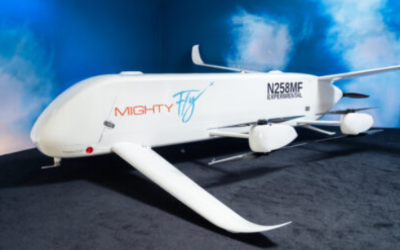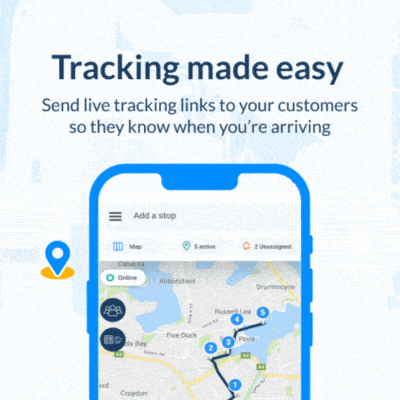US-based drone delivery company MightyFly unveiled its third generation of the Cento aircraft, an autonomous hybrid eVTOL cargo aircraft. It is designed to carry 45 kilograms over 965 kilometers. Production of the aircraft was completed last month.
The new eVTOL has a sleek design and has some novel features, such as structural conductors, to increase reliability and reduce weight. The modern design will also optimize maintenance.
On the operational efficiency front, MightyFly’s Autonomous Load Mastering System (ALMS) component enables the aircraft to autonomously open and close its cargo bay door and receive and eject packages into and from the cargo bay opening.
The aircraft can also move and secure packages in the cargo bay via an internal positioning and locking system and sense and compute weight and balance.
MightyFly blazing a trail in logistics
MightyFly was founded in 2019. The following year, the company made its first autonomous delivery with a prototype.
Manal Habib, co-founder and CEO of MightyFly, says the new Centro brings to the world the key to transforming the expedited logistics market. “MightyFly’s new eVTOL will revolutionize industries such as manufacturing, retail, and healthcare and will transform life in rural and remote areas,” he says.
At the unveiling event, one of MightyFly’s investors, Tim Draper, founding partner of Draper Associates, says, “A few months ago, I saw the team working on its design and starting to manufacture its first parts. The vehicle you see today is a testimony of MightyFly’s talent, creativity, innovation, and decades of industry expertise. This technology will help save lives and solve painful logistics needs of businesses around the globe.”
MightyFly expects to demonstrate its autonomous loading, unloading, and balancing of packages capability to the U.S. Air Force in early 2025 and to perform additional Proof of Concept (POC) programs.
Also read: Customer needs are changing, so should drone designs
Fleet management
There are several reasons drones are being used for delivery. The standout has to be the speed of delivery. Drones fly above ground and are not restricted by traffic. Another factor is deliveries will not be hampered by the issue of labor shortages, and they may be in flight during a lunch hour when a person has to take breaks – the drone does not.
Drones are cost-effective. Imagine a courier fleet’s fuel bill at the end of each month. The drone does not travel on roads, so the drone has less wear and tear than a vehicle. Vehicles may also be stranded at a service center for a particular problem. Car repairs can be costly. In addition, drones do not emit toxic fumes. Drones are able to travel above rough terrain and provide an aerial route straight to the destination.
Locate2uNews reported last month that Walmart-backed company DroneUp has received approval from the Federal Aviation Administration (FAA) to fly beyond the visual line of sight (BVLOS).
Now Read: Sphere Drones launches solar-powered, mobile drone platform
Share this article
About the author
Sharl is a qualified journalist. He has over 10 years’ experience in the media industry, including positions as an editor of a magazine and Business Editor of a daily newspaper. Sharl also has experience in logistics specifically operations, where he worked with global food aid organisations distributing food into Africa. Sharl enjoys writing business stories and human interest pieces.














